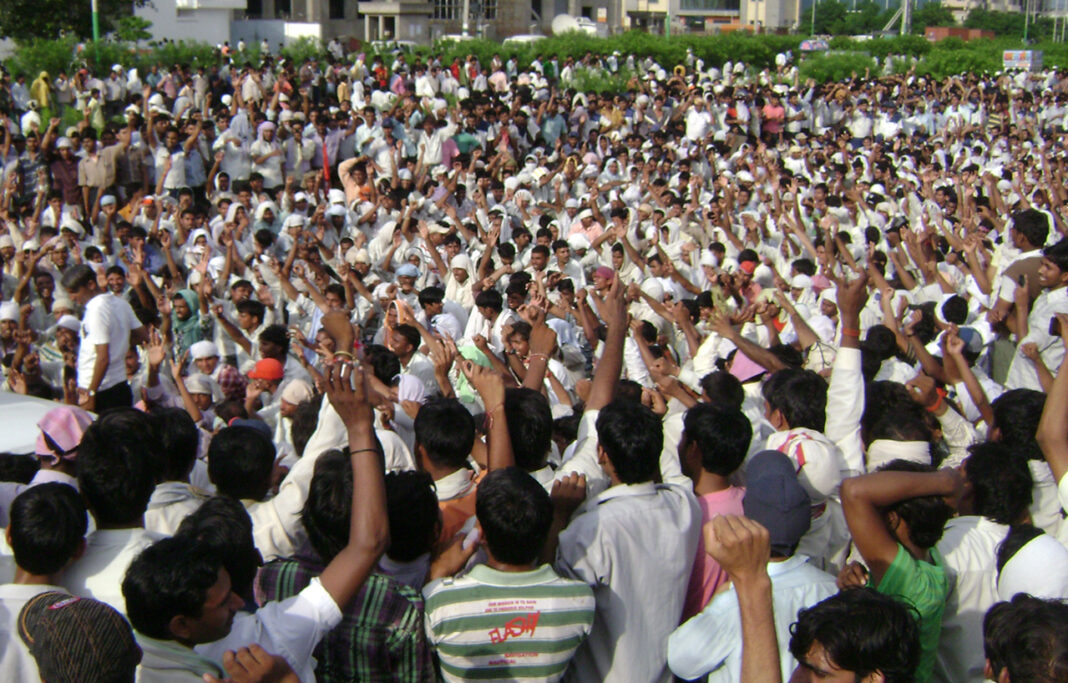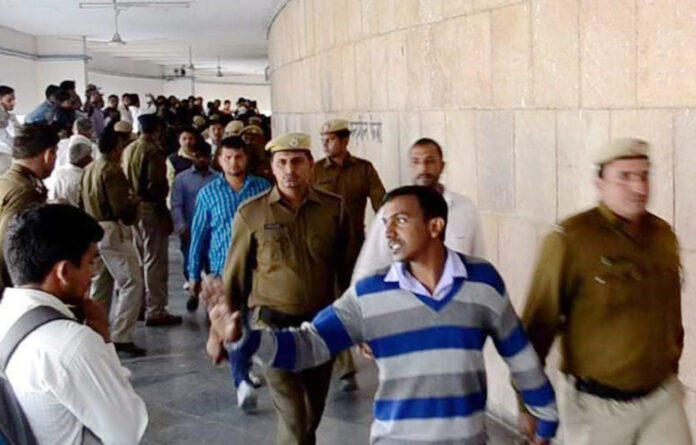Jia Lal, who was among the 13 Maruti workers sentenced to life imprisonment in Bhondsi Jail, Gurgaon, under the alleged charge of attempt to murder of a Maruri official, passed away on June 4. Though he was suffering from cancer, his imprisonment and death illustrate a painful example of how the corporate- state nexus joins hands with the judiciary and police to push the Indian workers towards a slow decimation in both body and spirit. A Groundxero report.
Jia Lal came from a Dalit family, and worked in the assembly line of Maruti Suzuki Manesar plant until 2012. He was the only non-office bearer of the Maruti Suzuki Workers Union, amongst the 13 workers sentenced to life imprisonment in Bhondsi Jail, Gurgaon, in 2012, allegedly on attempt to murder charge. Jia Lal passed away a few days back on June 4 at around 11PM. He was in his mid-thirties. He was suffering from cancer that initially affected his lower spinal cord and finally claimed his life.
Jia Lal was arrested and imprisoned after the July 18, 2012 incident that took place in Maruti Manesar plant, resulting in death of a HR manager. The Maruti management could not even provide any circumstantial evidences against Jia Lal and his 12 other accused co-workers. In particular, as a moving article in Scroll described two years after the arrest, none of the witnesses saw Jia Lal at the ‘crime spot,’ except for one senior plant manager, who claimed that Jia Lal had set fire to the factory, but later failed to identify him, when paraded along with other workers.
3. 45 small seconds are sufficient for assembling a car!
The date June 4 is of immense significance for the Maruti Workers movement. More so this year, as it was on this date exactly a decade back that the Maruti workers in the Manesar plant staged a sit-in inside the company, claiming their right to form their own union. Thus began the Maruti struggle that significantly re-energized the working-class movement not only in that region but in the entire country. “This had consequences in the Suzuki Powertrain and Motorcycle plants as well, and both these plants also saw unions being made during this time”, states a detailed report published in TNLabour by the Krantikari Naujawan Sabha Delhi Unit. Led and participated by young workers in their early twenties, the struggle was special for many reasons including the “unprecedented unity between permanent and contract workers”, as a PUDR report seeking justice for the workers mentioned.
The June 4-17 sit-in rattled the management and to defuse the crisis it was forced to agree to almost all the demands made by the workers, including re-employment of terminated workers and increasing the assembling time for each car from 45 seconds to 60 seconds. For many of us, gaining a matter of 15 seconds for a work might sound meaningless. But for the assembly line workers, who are completely alienated from the production and forced to perform twenty different mechanical actions within those few seconds, keeping up with the robotic arms and conveyer belts for several harrowing hours, the gain was significant.
In order to gain an understanding of the abysmal working conditions that Jia Lal and his colleagues suffered, why they needed to unionize, and how, for the company, legal penalization was an extension of its already inhuman treatment of the workers – one may watch the video of an informative and analytical revisiting of the Maruti movement. In interviews in the video, the activists / journalists discuss an old Tehelka report that spoke of the Maruti assembly line: how the workers’ pay was deducted for even a minute’s delay; how a mere half an hour lunch break was allowed for travelling back and forth between the factory and the canteen, lying three fourth of a kilometre apart; how a piddly 7 minutes was to be divided between a tea-break and a pee-break and so on. On top of this precarity, the workers were customarily made to work in an abusive atmosphere, where it was common for supervisors to throw casteist slurs and other obscenities at the workers.
June 4, 2011 changed some of it. As a Groundxero report from May 2018 states, for these workers, June 4 was their own form of May Day. And the following 13 days of sit-in followed in the same spirit. From now on, many of them might also remember this day as the day of Jia Lal’s martyrdom.
























